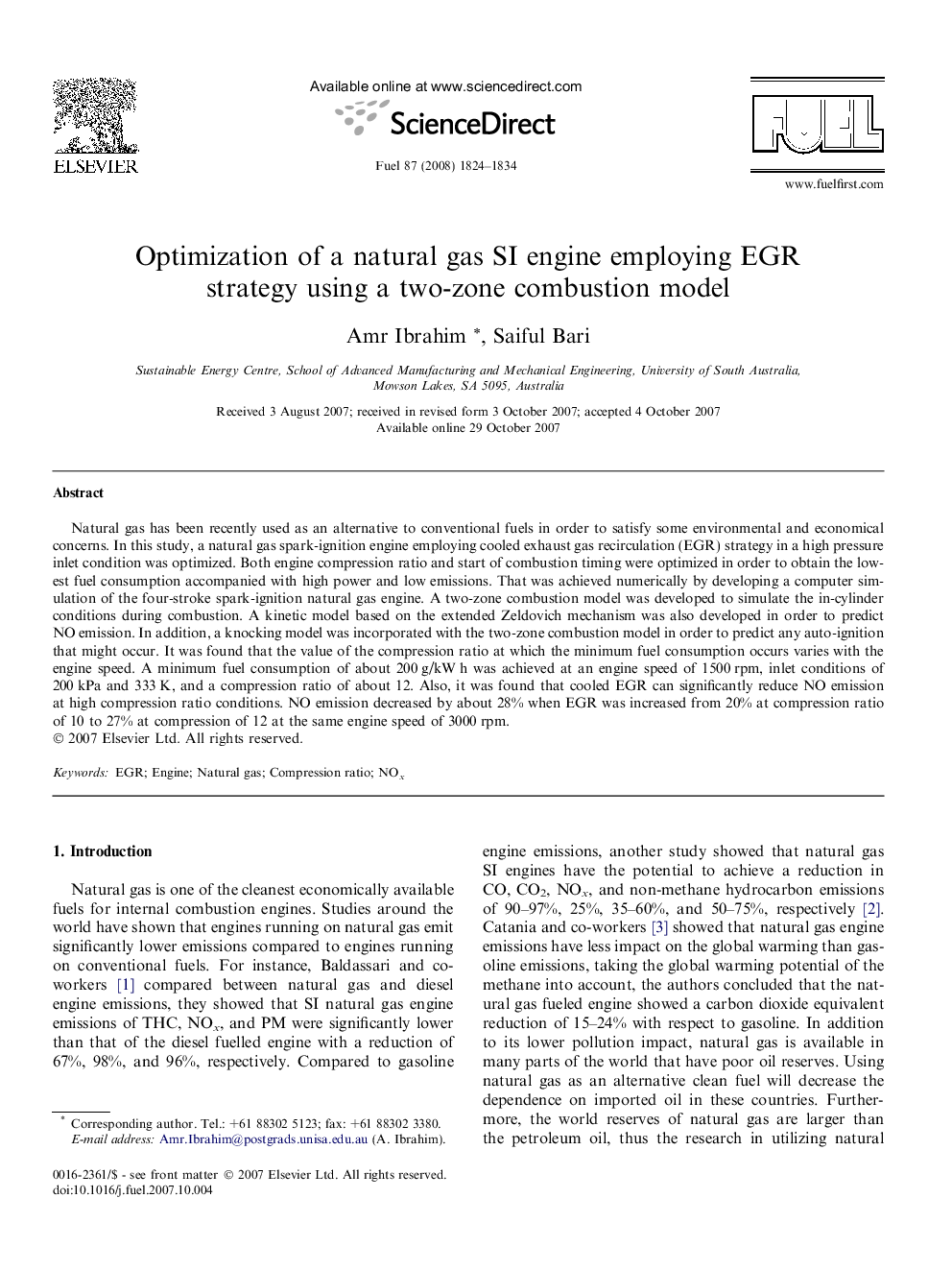| Article ID | Journal | Published Year | Pages | File Type |
|---|---|---|---|---|
| 208349 | Fuel | 2008 | 11 Pages |
Natural gas has been recently used as an alternative to conventional fuels in order to satisfy some environmental and economical concerns. In this study, a natural gas spark-ignition engine employing cooled exhaust gas recirculation (EGR) strategy in a high pressure inlet condition was optimized. Both engine compression ratio and start of combustion timing were optimized in order to obtain the lowest fuel consumption accompanied with high power and low emissions. That was achieved numerically by developing a computer simulation of the four-stroke spark-ignition natural gas engine. A two-zone combustion model was developed to simulate the in-cylinder conditions during combustion. A kinetic model based on the extended Zeldovich mechanism was also developed in order to predict NO emission. In addition, a knocking model was incorporated with the two-zone combustion model in order to predict any auto-ignition that might occur. It was found that the value of the compression ratio at which the minimum fuel consumption occurs varies with the engine speed. A minimum fuel consumption of about 200 g/kW h was achieved at an engine speed of 1500 rpm, inlet conditions of 200 kPa and 333 K, and a compression ratio of about 12. Also, it was found that cooled EGR can significantly reduce NO emission at high compression ratio conditions. NO emission decreased by about 28% when EGR was increased from 20% at compression ratio of 10 to 27% at compression of 12 at the same engine speed of 3000 rpm.
